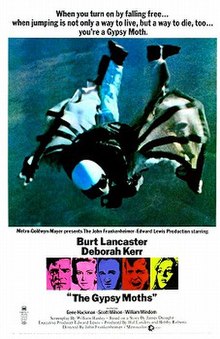
Burton Stephen Lancaster was an American actor and film producer. Initially known for playing tough guys with a tender heart, he went on to achieve success with more complex and challenging roles over a 45-year career in films and television series. He was a four-time nominee for the Academy Award for Best Actor, and he also won two BAFTA Awards and one Golden Globe Award for Best Lead Actor. The American Film Institute ranks Lancaster as #19 of the greatest male stars of classic Hollywood cinema.

Eugene Allen Hackman is an American retired actor. In a career that spanned more than six decades, he received two Academy Awards, two BAFTA Awards, four Golden Globes, a Screen Actors Guild Award, and the Silver Bear. Hackman's two Academy Award wins included one for Best Actor for his role as Jimmy "Popeye" Doyle in William Friedkin's acclaimed thriller The French Connection (1971) and the other for Best Supporting Actor for his role as "Little" Bill Daggett in Clint Eastwood's Western film Unforgiven (1992). His other Oscar-nominated roles were in Bonnie and Clyde (1967), I Never Sang for My Father (1970), and Mississippi Burning (1988).
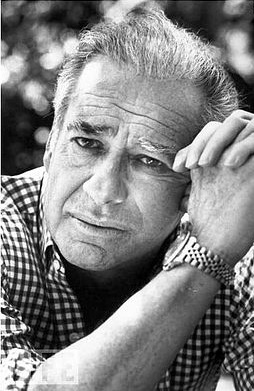
John Michael Frankenheimer was an American film and television director known for social dramas and action/suspense films. Among his credits were Birdman of Alcatraz (1962), The Manchurian Candidate (1962), Seven Days in May (1964), The Train (1964), Seconds (1966), Grand Prix (1966), French Connection II (1975), Black Sunday (1977), The Island of Dr. Moreau (1996), and Ronin (1998).
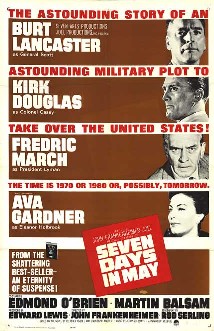
Seven Days in May is a 1964 American political thriller film about a military-political cabal's planned takeover of the United States government in reaction to the president's negotiation of a disarmament treaty with the Soviet Union. The film, starring Burt Lancaster, Kirk Douglas, Fredric March, and Ava Gardner, was directed by John Frankenheimer from a screenplay written by Rod Serling and based on the novel of the same name by Fletcher Knebel and Charles W. Bailey II, published in September 1962.

A drop zone (DZ) is a place where parachutists or parachuted supplies land. It can be an area targeted for landing by paratroopers and airborne forces, or a base from which recreational parachutists and skydivers take off in aircraft and land under parachutes. In the latter case, it is often beside a small airport, frequently sharing the facility with other general aviation.

Wingsuit flying is the sport of skydiving using a webbing-sleeved jumpsuit called a wingsuit to add webbed area to the diver's body and generate increased lift, which allows extended air time by gliding flight rather than just free falling. The modern wingsuit, first developed in the late 1990s, uses a pair of fabric membranes stretched flat between the arms and flanks/thighs to imitate an airfoil, and often also between the legs to function as a tail and allow some aerial steering.

The Train is a 1964 war film directed by John Frankenheimer and starring Burt Lancaster, Paul Scofield and Jeanne Moreau. The picture's screenplay—written by Franklin Coen, Frank Davis, and Walter Bernstein—is loosely based on the non-fiction book Le front de l'art by Rose Valland, who documented the works of art placed in storage that had been looted by Nazi Germany from museums and private art collections. Arthur Penn was The Train's original director, but was replaced by Frankenheimer three days after filming had begun.

French Connection II is a 1975 American neo-noir action thriller film starring Gene Hackman and directed by John Frankenheimer. It is a sequel to the 1971 film The French Connection, and continues the story of the central character, Detective Jimmy "Popeye" Doyle, who travels to Marseille in order to track down French drug-dealer Alain Charnier, played by Fernando Rey, who escaped at the end of the first film. Hackman and Rey are the only returning cast members.

Carl Ronald Boenish, considered the father of modern BASE jumping, was an American freefall cinematographer, who in 1978 filmed the first jumps from El Capitan using ram-air parachutes.
Charles Davenport Champlin was an American film critic and writer.

Cutaway is a 2000 American crime action television film about skydiving, co-written and directed by Guy Manos. The term "cut-away" is used frequently in the film, in reference to parachuting and also in reference to life in general. Cutaway stars Tom Berenger, Stephen Baldwin, Dennis Rodman, Maxine Bahns, Ron Silver, Casper Van Dien and Thomas Ian Nicholas. This was Rodman's third film. It aired on the USA Network on October 3, 2000.
James William Drought was an American author, magazine editor, speech writer and press officer for the Office of Public Relations.
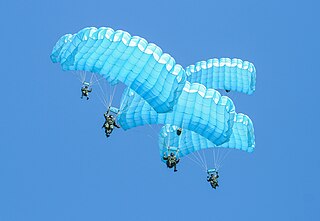
Parachuting and skydiving is a method of transiting from a high point in an atmosphere to the ground or ocean surface with the aid of gravity, involving the control of speed during the descent using a parachute or parachutes.
Norman Albert Kent is an aerial cinematographer and skydiver best known for his aerial videography in films such as Cutaway, Drop Zone and Terminal Velocity.

Skydive Empuriabrava is the brand that has been commercially operating Empuriabrava Aerodrome since 1985. Since it began operating, its main activity has been skydiving although it also offers photo flights, aerial and tourist advertising, and runs a school of aviation for private pilots.
H. Truesdell Smith—known variously as "H. T. Smith", "Henry Truesdell Smith", "Harold Truesdell Smith", or "Daredevil Smitty" but best known as "Smitty the Jumper"—was an American exhibition parachutist and skydiver of the 1920s and 1930s. He made periodic returns to skydiving starting in the late 1950s, jumping in every subsequent decade until his death, becoming widely known as "the oldest living skydiver", a title he claimed until his death in 1995 at the age of 96.
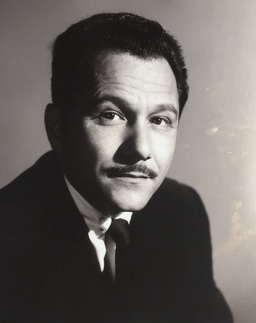
Edward Lewis was an American film producer and writer. As producer, he worked on nine films in partnership with actor Kirk Douglas; from 1958 to 1966, Lewis was Vice-President of Kirk Douglas film production company, Bryna Productions, as well as its subsidiaries, Brynaprod, Joel Productions and Douglas and Lewis Productions. He also produced nine films directed by John Frankenheimer. Lewis also wrote several books.
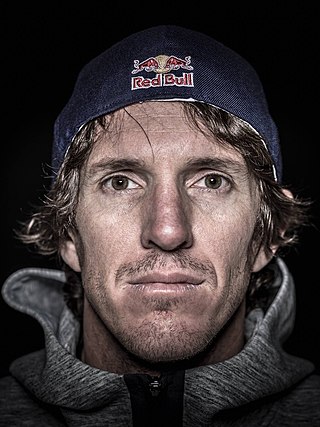
Jeff "Jeffro" Provenzano is an American professional skydiver, wingsuit flyer, BASE jumper, HALO jumper and stuntman. He is a member of the Red Bull Air Force, and is considered to be a pioneer of the skydiving discipline of swooping.

Jacques Fonteray was a French costume designer active in the film industry. Amongst his credits were the costumes for the 1968 film Barbarella.
On August 27, 1967, eighteen skydivers mistakenly parachuted into Lake Erie, four or five nautical miles (7.5–9.3 km) from Huron, Ohio, United States, after jumping from a civilian North American B-25 Mitchell. Sixteen drowned. The plane's pilot, unable to see the surface through heavy cloud cover, had relied on guidance from the Cleveland Air Route Traffic Control Center, which had incorrectly advised him that he was over Ortner Airport—actually twelve to thirteen miles (19–21 km) away. Jumping through cloud cover in violation of Federal Aviation Administration rules, the skydivers were unaware that they were over water until they punched through the clouds at 4,000 feet (1,200 m). Despite efforts by many to shed heavy gear, only two were able to stay above water for long enough to be rescued.
